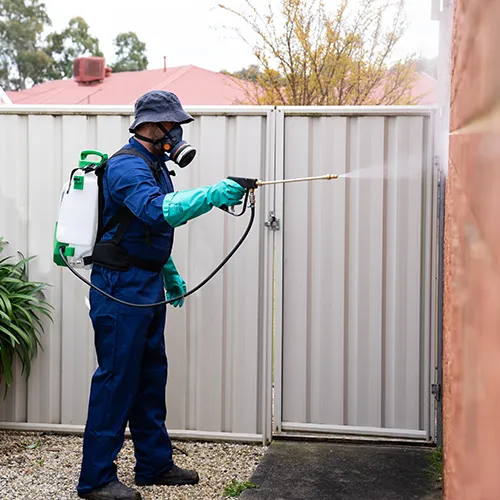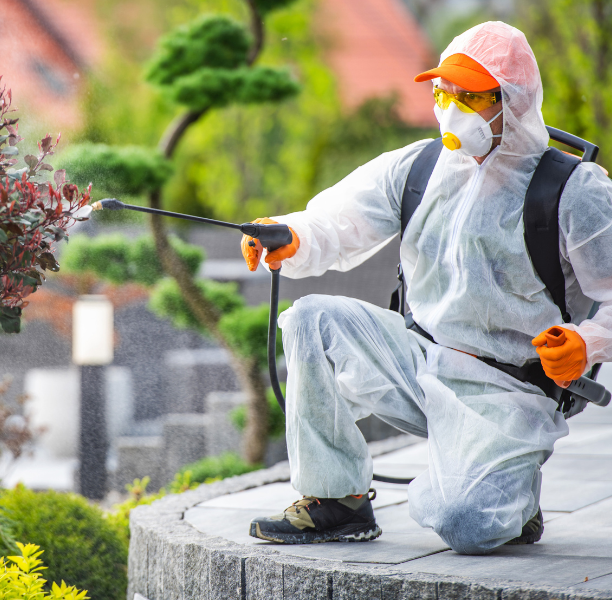Discovering Infestation and Therapy Strategies in the Globe of Pest Control
The landscape of bug control encompasses a myriad of obstacles, specifically as invasions of usual house pests proceed to develop. By incorporating preventative steps with advanced administration strategies, such as Integrated Pest Monitoring (IPM), home owners can much better safeguard their atmospheres.

Usual Family Vermin
When it comes to managing our living areas, recognizing typical family pests is critical. These parasites not only interrupt our comfort yet can likewise posture wellness dangers and damages building. The most common home insects consist of ants, cockroaches, rodents, termites, and bed insects.
Ants, commonly seen foraging in kitchen areas, can contaminate food and develop large swarms. Rats, consisting of mice and rats, can create structural damages and carry diseases like hantavirus and salmonella.
Acknowledging the indications of these bugs, such as droppings, nests, or bite marks, is important for very early intervention (Pest Control Lockhart). Appropriate hygiene techniques, securing access factors, and maintaining a clutter-free setting work preventative steps. By recognizing these typical house insects and recognizing their actions, homeowners can take positive actions to reduce invasions, ensuring a healthier living atmosphere
Understanding Parasite Infestations
Bug problems can escalate rapidly, turning a small inconvenience right into a considerable trouble if not addressed without delay. Usual variables contributing to infestations consist of poor cleanliness, architectural susceptabilities, and seasonal adjustments that drive insects indoors.
Recognizing the kind of insect is important, as different types exhibit varied behaviors and reproductive rates. For instance, rodents might develop nests in hidden areas while insects like roaches prosper in moist atmospheres. Early discovery commonly depends upon acknowledging indications such as droppings, gnaw marks, or unusual sounds, which can suggest a trouble prior to it becomes serious.
Environmental conditions additionally play a crucial function in bug spreading. Cozy, humid environments can promote the fast growth of parasite populaces, while modifications in landscape design or construction can unintentionally create helpful settings. For that reason, normal examinations and preventative actions are extremely important to reducing the risk of problems. An educated approach to understanding these characteristics lays the groundwork for efficient parasite monitoring approaches in the future.
Therapy Techniques and Methods
Efficient treatment methods and methods are crucial for reducing insect infestations and restoring a secure setting. A diverse strategy is typically best, incorporating chemical, biological, and mechanical strategies customized to the specific parasite and the seriousness of the invasion.
Chemical therapies consist of making use of pesticides and herbicides, which can effectively remove insects. Correct application and adherence to safety and security guidelines are crucial to reduce dangers to human beings and non-target microorganisms. Integrated Bug Monitoring (IPM) motivates the judicious use of chemicals as a last hotel, depending instead on monitoring and limit degrees to establish treatment demands.
Organic control techniques involve presenting all-natural predators or parasites to decrease insect populations. This technique is significantly popular, especially in agricultural settings, as it advertises ecological sustainability.
Mechanical approaches, such as catches and obstacles, offer instant remedy for pests without presenting chemicals. Alternatives include sticky catches for bugs or physical barriers for rodents.
Ultimately, the option of therapy technique ought to consider the details insect, the environment, and potential effect on human health and wellness and ecosystems. A balanced combination of these approaches can properly handle infestations while promoting long-lasting parasite control options.
Preventative Steps for Homes
Proactively addressing pest problems before helpful resources they rise is essential for keeping a healthy home environment (Pest Control Lockhart). Applying reliable preventive steps can considerably minimize the likelihood of problems, ultimately securing both your building and health

Appropriate landscaping likewise plays a crucial duty in prevention. Maintaining shrubs and trees trimmed away from your home reduces the possibilities of insects finding their way inside your home. Make sure that water drainage systems are working successfully to prevent standing water, which can attract in insects and other bugs.
Last but not least, routine assessments are a good idea. look at these guys Routinely inspecting for indications of pest task permits very early treatment. By embracing these safety nets, home owners can develop an atmosphere that is less congenial to insects, consequently improving their overall quality of life and lowering the requirement for extensive bug control treatments.
Business Insect Control Methods
A comprehensive approach to industrial insect control is crucial for organizations intending to maintain a risk-free and hygienic atmosphere. Reliable methods entail a mix of regular inspections, worker training, and the execution of Integrated Pest Administration (IPM) methods.
Normal assessments enable early detection of parasite activity, permitting timely treatment. Services should establish a regular schedule for these evaluations, concentrating on high-risk areas such as cooking areas, storage space spaces, and waste disposal sites. Worker training is equally vital; staff needs to be informed on the indications of insect invasions and the significance of reporting them right away.
Carrying out IPM practices helps alleviate parasite concerns sustainably. Recommended Site This includes environment adjustment, such as sealing entrance factors and reducing mess, along with utilizing all-natural deterrents before turning to chemical therapies.

Additionally, collaborating with a qualified pest control company makes sure access to professional understanding and sophisticated treatment choices. This collaboration can lead to personalized pest control prepares tailored to the details requirements of the business, minimizing risks and boosting general efficiency. Eventually, a positive and informed method fosters a pest-free environment, safeguarding both public health and company track record.
Conclusion
Finally, effective insect control necessitates a thorough understanding of typical family pests and their actions, combined with targeted therapy techniques. Executing safety nets together with therapy methods such as Integrated Parasite Administration and organic control enhances the ability to alleviate problems. Routine assessments and a mix of chemical and mechanical options better add to preserving pest-free atmospheres. Inevitably, a well-rounded approach to pest monitoring is essential for safeguarding living rooms from undesirable intruders.